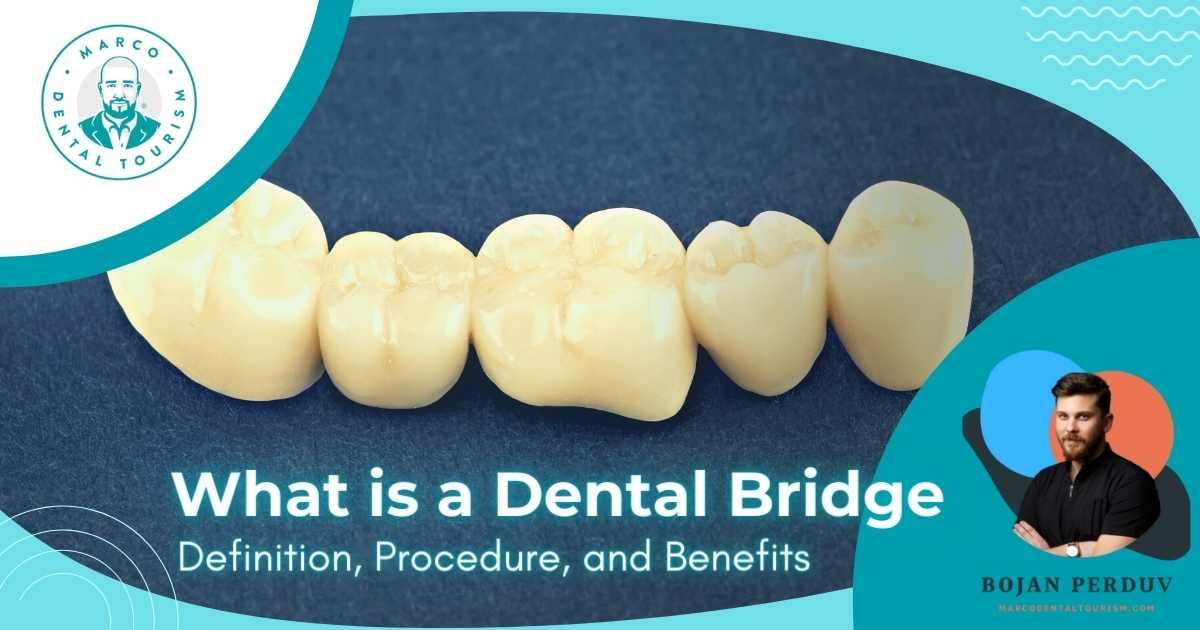Dental Bridge - Correcting Crooked Teeth and Other Benefits

Have you ever felt like your smile is incomplete? Are you missing one or two teeth and not sure what to do? If so, you should consider a dental bridge. A dental bridge is a great way to fill all the gaps in your teeth, achieving your perfect smile. In this blog, we discuss everything you need to know about dental bridges, including what they are, why they are useful, as well as whether the installation procedure is painful and what it involves. If you are looking for a solution to complete your smile, you are on the right blog where you will get all the necessary and useful information!
What is a dental bridge?

A dental bridge is a special device used to replace one or more missing teeth. It is designed to bridge the gap between two teeth by attaching an artificial tooth to adjacent teeth or implants. Securely attached to existing teeth, crowns provide a permanent solution to a natural smile.
What is a dental bridge used for?

A dental bridge is used to replace one or more teeth due to caries, gum disease, injuries, or tooth extraction. It usually consists of an artificial tooth between two crowns that are attached to adjacent healthy teeth. It helps to restore bite strength, maintain the shape of the face or straighten crooked teeth.
What is the patient preparation process for a dental bridge procedure?

To make sure that the installation of a permanent dental bridge is the right solution to the problem of missing teeth that you have, be sure that you have followed all the necessary preparation steps, which include:
- Scheduling a detailed dental examination: A detailed examination of the teeth, gums, and entire jaw will help your dentist determine whether a bridge is an adequate solution, as well as identify all potential dental problems before the intervention itself.
- X-ray: An X-ray of the jaw will provide a detailed view of the area, tooth structure, and bone which will help the dentist accurately plan the placement of the bridge.
- Maintaining regular oral and dental hygiene: Brush your teeth at least twice a day with fluoride toothpaste and rinse them with water after each meal.
- Professional teeth cleaning: Get professional teeth cleaning to remove accumulated plaque or tartar and ensure clean and healthy teeth before the treatment itself.
- Consultations with the dentist: Collect all the necessary documentation and inform your dentist about all the medicines you are using. Ask questions and clear up any doubts so that the intervention itself is as comfortable and carefree as possible.
How is a dental bridge done?

Making a dental bridge is a precise and complex process that requires an experienced and professional dentist to make the intervention as easy and painless as possible. Bridge installation steps include:
- Tooth preparation: Tooth preparation is performed by filing, i.e. removing a small amount of enamel from the tooth on both sides of the opening in order to create a place for the bridge. Abutments are prepared by reducing them in size and shaping them to fit the bridge firmly.
- Taking impressions of the teeth: After the teeth have been arranged and prepared, an impression of the supporting ones is taken, i.e. bearing teeth, and are sent to the dental laboratory, which makes the bridge according to the unique measurements of the teeth of each individual patient.
- Making a bridge: Based on previously created impressions, a dental bridge is made or cast in a dental laboratory according to a precisely determined measure. The bridge is made of a piece of metal or porcelain. It is modeled after the patient's teeth and designed to fit the patient's mouth perfectly.
- Placing the bridge: The bridge is then placed on the supporting teeth with a special dental cement to ensure a good and firm fit.
- Final check: After the bridge is placed, it will be polished and checked for fit, bite, and comfort.
What are the advantages and disadvantages of a dental bridge?
The advantages of a dental bridge include restoring the bite, beautifying the smile, as well as reducing the risk of various gum diseases. Disadvantages can be potential sensitivity and the need for completely healthy adjacent supporting teeth. Talk to your dentist to find the right solution for you.
What are the complications and risks of dental bridges?
Dental bridges are a safe and effective way to replace missing teeth, however, there are several risks to be aware of, the most common of which are tooth decay, pain, and difficulty in cleaning. Regular maintenance and dental examinations can greatly help reduce the risk of all complications.
How long does a dental bridge last?

With proper care, a dental bridge can last 10-15 years or even longer. Good dental hygiene, regular dental examinations, and avoiding hard and sticky foods are key to extending the life of the bridge. By taking care of hygiene and healthy habits, dental care can provide you with a great smile for many years!
How to take care of your dental bridge?

Brush your teeth twice a day and floss to remove plaque and food debris from your teeth. Regular dental checkups and cleanings are also important for the proper maintenance of dental bridges. Ask your dentist about additional preventive care options to ensure quality and longevity.
How does a dental bridge help straighten teeth?
A dental bridge can be used to straighten teeth by filling the gap between teeth and providing support to adjacent teeth. This bridge helps hold the teeth in place while providing strength and stability to the surrounding teeth, resulting in a straighter, healthier smile.
How to choose the right dentist for a dental bridge?
Choosing a dental bridge dentist can be essential to treatment. Look for a dentist with experience and a good reputation, as well as a dentist who will offer you personalized care. Ask friends and family for recommendations and read reviews to make a good and informed decision.
We suggest a few more useful tips on how to choose the right dentist for bridges:
- Choose a specialized dentist: Choose a dentist who specializes in dental bridges to gain confidence in the quality and results of the service.
- Check the photos before and after the installation of the bridge: Check the efficiency of the installation if there are photos of the teeth before and after the intervention itself on the office's website.
- Ask an expert for advice: Ask your dentist to explain the different types of bridges available, the fabrication procedures, and the best options for your needs.
Conclusion

The benefits of a dental bridge extend far beyond physical appearance. By restoring the natural shape and structure of your teeth, you can also regain your ability to speak, eat and smile with confidence. Restoring your oral health can have a significant impact on your overall health and well-being. Although it takes time for the bridge to fit properly and for our mouths to adjust to the new bridge, the long-term benefits of a dental bridge far outweigh the short-term discomfort. With proper care and maintenance, a dental bridge can last for many years, giving you a significantly more confident and genuine smile.













Share your opinion!
What do you think about this topic?
Comments (0)